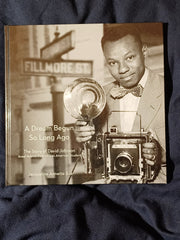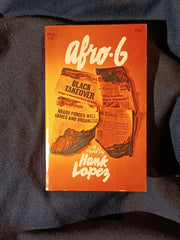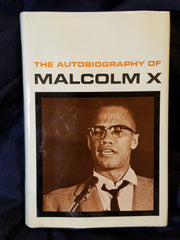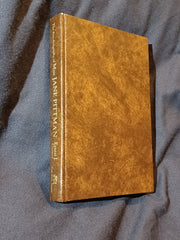Negro drawings by Miguel Covarrubias. First Printing.
Negro drawings by Miguel Covarrubias. Alfred A. Knopf. 1927. First Printing trade edition (copyright date same as title page date, with no later printings listed). 7 1/2" x 10" pages not numbered, Hardcover with dust jacket. DUST JACKET: Many missing pieces. Spine is completely gone. Two corners of the front panel are gone. Flaps are separated from the rest of the dust jacket. Not price-clipped. Original price $7.00. Now protected and held together by a removable mylar dj cover. BOOK: Gilt lettering on spine is almost completely faded, but that on the front cover is bright and unfaded. Bottom corner of the front cover shows some sun fading. Some light smudging on the back cover. Moderate cover edge wear. A light scrape on the bottom edge of the page block, not affecting the page surfaces. Slight separation inside the back cover. Pinpoint specks of soiling inside the front cover. No other previous owner markings. No tears, folds or creases to pages. Binding is tight with no looseness to pages. Not ex-library, not remaindered and not a facsimile reprint. For sale by Jon Wobber, bookseller since 1978. IJ30a
"Miguel Covarrubias, also known as José Miguel Covarrubias Duclaud (22 November 1904 — 4 February 1957) was a Mexican painter, caricaturist, illustrator, ethnologist and art historian. Along with his American colleague Matthew W. Stirling, he was the co-discoverer of the Olmec civilization.
Miguel's artwork and celebrity caricatures have been featured in The New Yorker and Vanity Fair magazines.[3] The linear nature of his drawing style was highly influential to other caricaturists such as Al Hirschfeld. Miguel's first book of caricatures The Prince of Wales and Other Famous Americans was a hit, though not all his subjects were thrilled that his sharp, pointed wit was aimed at them. He immediately fell in love with the Harlem jazz scene, which he frequented with Rosa and friends including Eugene O'Neill and Nickolas Muray. He counted many notables among his friends including Zora Neale Hurston, Langston Hughes and W.C. Handy for whom he also illustrated books. Miguel's caricatures of the jazz clubs were the first of their kind printed in Vanity Fair. He managed to capture the spirit of the Harlem Renaissance in much of his work as well as in his book, Negro Drawings. He did not consider these caricatures, but serious drawings of people, music and a culture he loved." - wikipedia
"Miguel Covarrubias, also known as José Miguel Covarrubias Duclaud (22 November 1904 — 4 February 1957) was a Mexican painter, caricaturist, illustrator, ethnologist and art historian. Along with his American colleague Matthew W. Stirling, he was the co-discoverer of the Olmec civilization.
Miguel's artwork and celebrity caricatures have been featured in The New Yorker and Vanity Fair magazines.[3] The linear nature of his drawing style was highly influential to other caricaturists such as Al Hirschfeld. Miguel's first book of caricatures The Prince of Wales and Other Famous Americans was a hit, though not all his subjects were thrilled that his sharp, pointed wit was aimed at them. He immediately fell in love with the Harlem jazz scene, which he frequented with Rosa and friends including Eugene O'Neill and Nickolas Muray. He counted many notables among his friends including Zora Neale Hurston, Langston Hughes and W.C. Handy for whom he also illustrated books. Miguel's caricatures of the jazz clubs were the first of their kind printed in Vanity Fair. He managed to capture the spirit of the Harlem Renaissance in much of his work as well as in his book, Negro Drawings. He did not consider these caricatures, but serious drawings of people, music and a culture he loved." - wikipedia


















